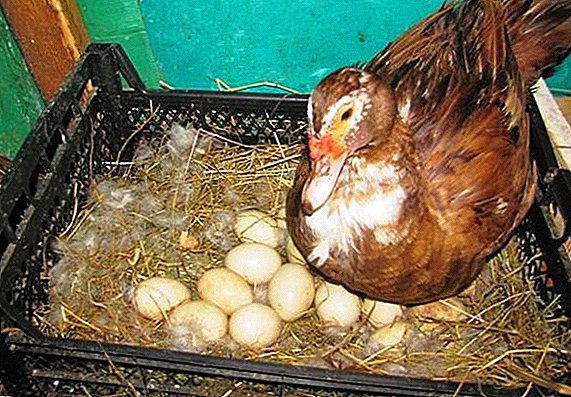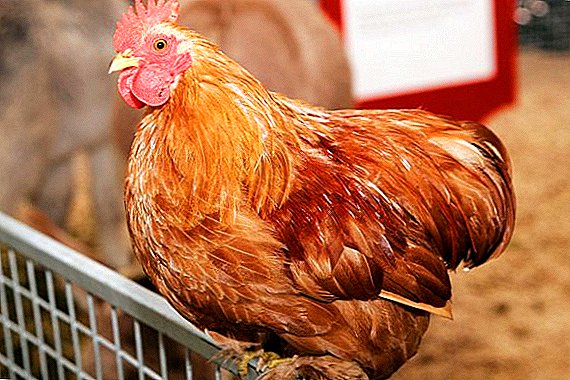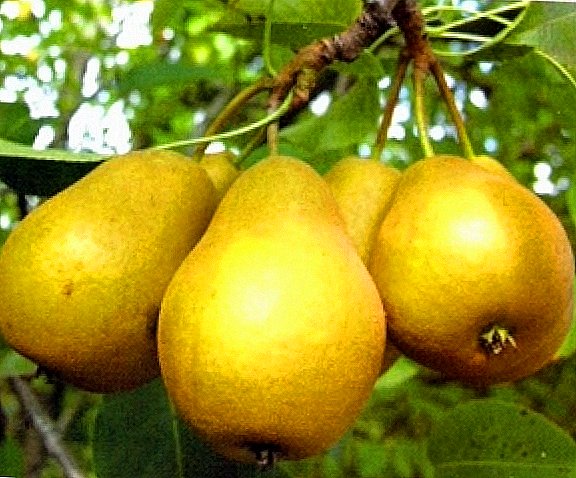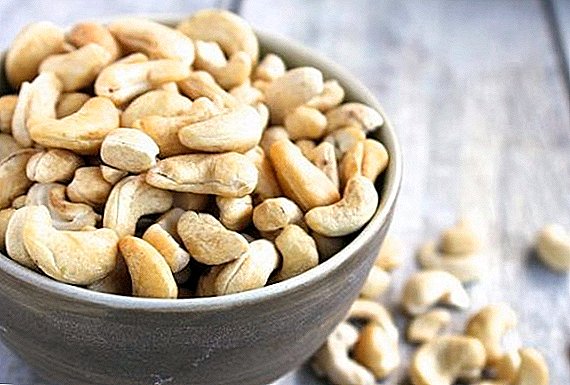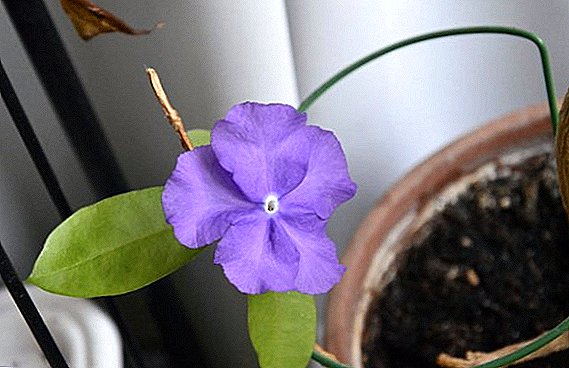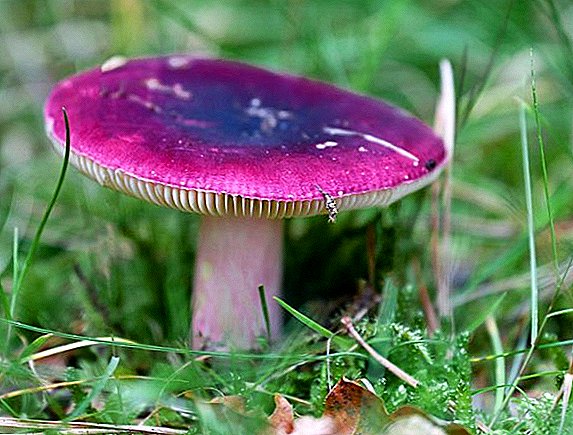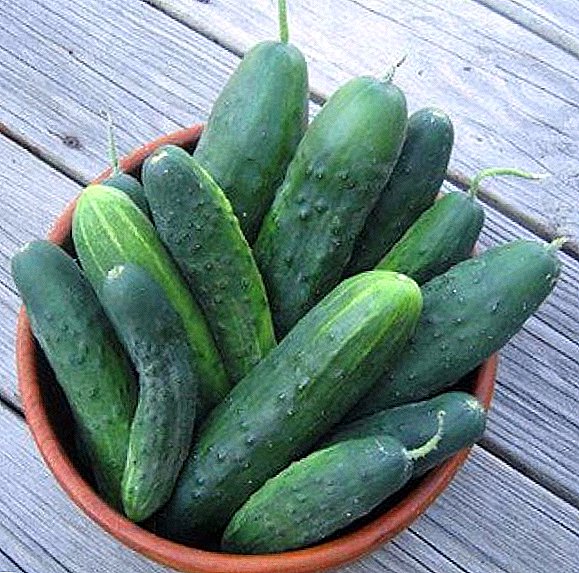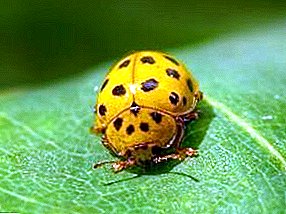
Every summer, all summer residents and those who have their own vegetable garden, face the same problem: pest invasiondestroying and damaging cultivated plants.
One such pest of vegetable crops is the potato bug bug, or otherwise, epilahny.
Let's try to figure out what a potato bug is, where it can be found and how to deal with it?
To fight with the beetle was effectiveIt is important to know about some stages of its development, periods of greatest activity and plants that are most vulnerable to its attack.
Appearance
It is a 5-7 mm long bug, resembling in appearance ordinary ladybug, with one difference - there are as many as 28 points on the wings.
The color itself is also not so bright - brown-red or red. An interesting feature is lightweight. whitish bloomwhich is in fact the smallest hairs.
Photos of epilahna and its larvae:

Development cycle
Potato cows are developing at a fast pace: one female can postpone from 250 to 520 eggs. Laying 10-20 pieces can be found on the underside of the leaves of potatoes or in fallen leaves.
The size of the eggs do not exceed 1 mm and have a pale yellow color.
After 3-7 days, the larvae come to light, for 20 days they pupate and remain in this state for 9 days. It is worth noting that despite the rapid development, 28-point ladybug multiplies once a year - from May to June.
Background: epilakhn larvae have a very unusual look, resembling caterpillar yellowish-green color, the whole body of which is covered with black setae (in the photo on the right). They are very soft and completely non-poisonous, they are needed more for movement.
Lifestyle
Beetles are constantly changing their habitat, moving to different plants, and with the onset of cold weather, hiding in shelters. They can winter under dry leaves, plant debris and weeds, and sometimes burrow into the soil.
Harm
Eats a 28-point potato bug not only with potato shoots, but also with leaves of other solanaceous, for example, tomatoes. It is also known that beetles like to eat cucumbers, watermelon, pumpkin, soybeans, sunflower and corn.
 The greatest harm to the crop a potato ladybug inflicts during the development of the larvae and before the departure of young beetles for wintering.
The greatest harm to the crop a potato ladybug inflicts during the development of the larvae and before the departure of young beetles for wintering.
Tuberization occurs at this stage, which entails not only damage already ripe tubers, but also the destruction of more emerging, which significantly reduces the yield.
Increased activity is associated with the desire of beetles to gain strength and stock up on nutrients before winter. Beetles and larvae eat only the soft part of the leaf, leaving the veins.
In general, applied damage is slightly less than from the Colorado potato beetle.
In addition to eating leaf mass, epilachny carry viruses that are harmless to them, but dangerous for plants.
Methods and means of struggle in the garden
How to deal with 28 point ladybug in the garden? Consider the most effective methods of dealing with it:
- Most simple measure - place solanaceous crops as far as possible and more isolated from each other, so as not to attract too many beetles and not to create favorable conditions for reproduction (females lay eggs simultaneously in several places, and since they choose solanaceous ones for this, such a measure will reduce the area distribution).
- Place cultures of solanaceae best on well cleaned areaswhere there are no dry leaves and other suitable covers.
- Weeds should be completely excluded. If it was not possible to eradicate them before the breeding season (May-June), then the epilakhns can lay eggs on weeds.
- Can hold high hilling plants. Beetles and larvae that fall from the plant will be under a layer of soil and die.
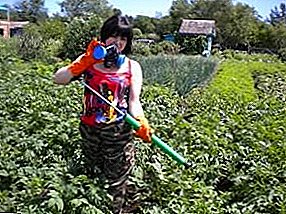 Well, and, of course, insecticides.
Well, and, of course, insecticides.Chemical treatment, in the case of increased risk of harm, can bring its results, but do not forget harmwhich they cause to human health.
Thus, if you have your own vegetable garden or a few hundred square meters in a country house where you like to grow potatoes, cucumbers, tomatoes or sunflowers, be ready to the summer invasion of small voracious bugs that can, if not destroy, then damage the plants you grow.


 Well, and, of course, insecticides.
Well, and, of course, insecticides.